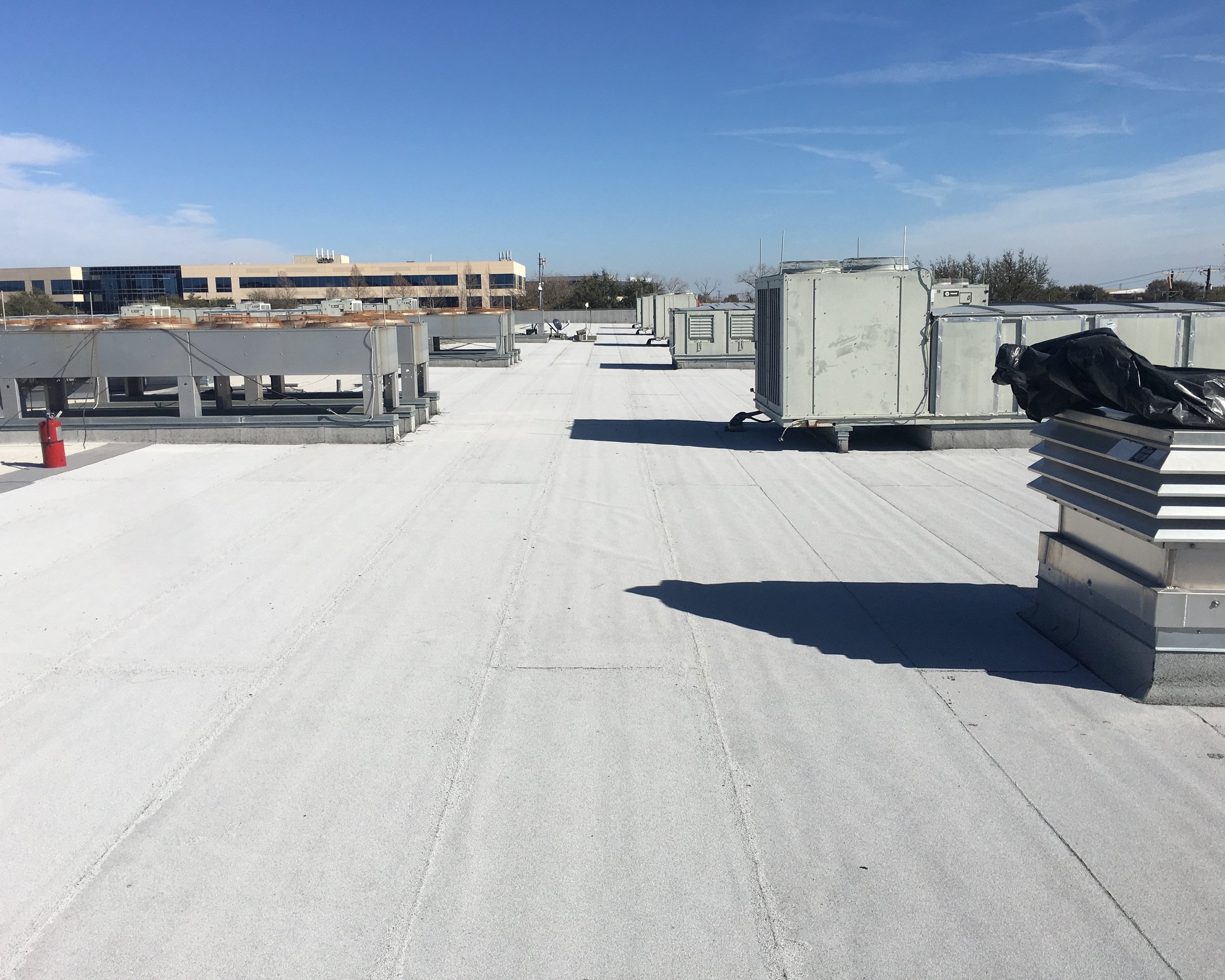If you are considering a change from torching APP-modified bitumen roof membranes to torching SBS-modified bitumen roof membranes, taking a moment to understand the differences between the two materials will be helpful.
The basic difference between SBS and APP is that APP-modified bitumen is a “plastic asphalt” and SBS-modified bitumen is an “elastic asphalt.” Why? Because APP-modified bitumen is modified with plastic in the form of APP (atactic polypropylene), and SBS-modified bitumen is modified with synthetic rubber in the form of SBS (styrene-butadiene-styrene).
When torching APP roofing membranes, the bitumen begins to flow like candle wax when it reaches temperatures above 300°F. The molten APP-modified bitumen behaves somewhat like hot mopping asphalt, and will flow. On the other hand, SBS-modified bitumen acts differently. While it’s melting point is only slightly lower than that of APP, it doesn’t have the same flow characteristics as APP-modified bitumen. Warm SBS gets very sticky---a factor that increased as additional heat is applied. It is like a gooey paste when it is ready for application. If the heat source remains in contact with the SBS blend, it will eventually begin to flow and be more liquid. By this time, however, it has been overheated.
Because properly heated SBS-modified bitumen doesn’t exhibit a liquid flow, the tendency on the part of the applicator is to give the SBS membrane more heat for a longer period of time than is really necessary. With Tradesman SBSB-modified bitumen roofing materials, determining when the sheet is properly heated is simplified. When the plastic burn-off sheet is melted away, and the SBS-modified membrane has the gooey consistency, the sheet is ready to be rolled into place. Proper torching is easy to check by back-rolling and looking for a full adhesion to the substrate.





